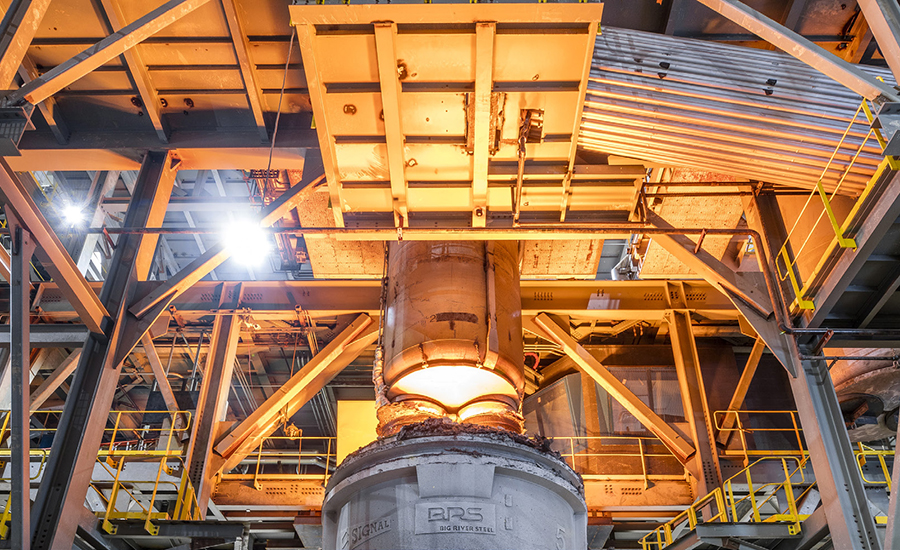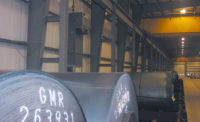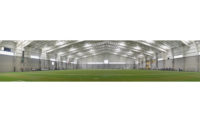Big River Steel started in 2014 in an area of northeast Arkansas that has been called “steel mill heaven.”
When it comes to steel mills, it’s hard to imagine the need for mechanical HVAC equipment to provide heat for the facility. The electric arc furnace used in the melt shop at Big River Steel exemplifies how unnecessary additional heat can be in an environment that already has plenty.
But there is more to the mill than just the melt shop. Before a 50,000-pound roll of high-quality Big River Steel leaves the plant, it has to pass through the finishing mill. In this facility, massive rolls of steel can be pickled, galvanized, or annealed. The need for mechanical heat becomes critical. As these rolls of steel are waiting to be processed, they are susceptible to environmental conditions that create rust.
If the temperature inside the finishing mill falls below the dew point temperature, flash rusting of the rolls of steel can occur within a 24-hour timeframe. In the worst-case scenario, rusting can cause revenue loss for Big River Steel if they have to scrap the steel altogether.
That’s where the Cambridge Engineering High Temperature Heating and Ventilation (HTHV) technology was brought in. The HTHV units in the finishing mill protect the coiled steel, working to keep the air warm, dry, and above the dew point in order to prevent moisture from forming on the rolls. When millions of dollars in inventory are waiting to be shipped to customers, it is important to make sure they receive the high-quality steel they have come to expect, according to Bryan Tidwell, construction project coordinator, Big River Steel.
Ever since the plant opened several years ago, Big River Steel has been using HTHV technology to help prevent the loss of inventory within the finishing mill. When company leaders decided to add an additional 80,000 square feet onto the finishing mill, they didn’t consider anything but HTHV technology to continue to keep their inventory rust-free.
To date, the finishing mill at Big River Steel uses a total of 10 S-2200 HTHV units to keep the steel inventory safe from rusting. HTHV technology also helps keep the facility warm for the employees on cold winter days as well.
Cambridge officials explained that HTHV has improved air temperature uniformity due to greater destratification without supplemental fans. It has also improved indoor air quality due to use of 100 percent outside air and 92 percent ultra-high efficiency resulting in energy savings.






